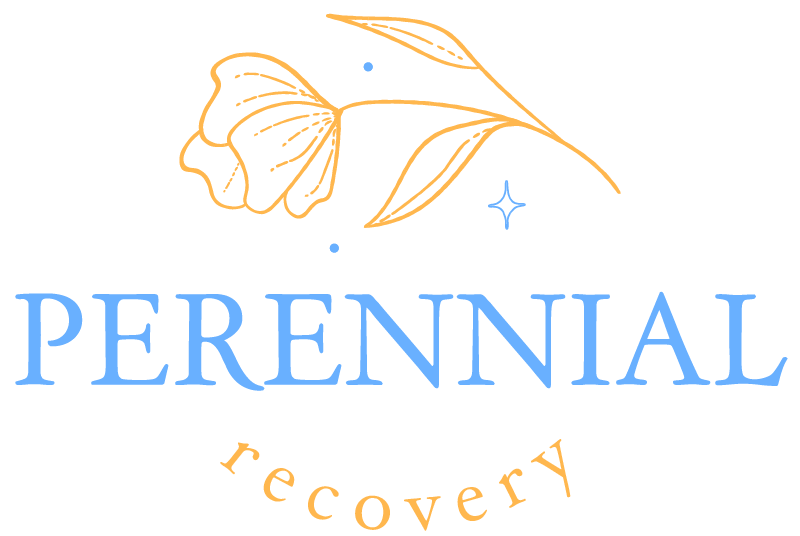Understanding Resilience
Resilience plays a vital role in the recovery phase, helping individuals navigate through challenging times and bounce back stronger. To fully comprehend the importance of staying connected during this period, it is crucial to first understand what resilience means and how it applies to the recovery process.

Definition of Resilience
Resilience can be defined as the ability to adapt, recover, and thrive in the face of adversity or significant life changes. It is the capacity to withstand and overcome difficult circumstances, utilizing personal strengths, resources, and support systems to regain stability and well-being.
Resilience is not about being unaffected by challenges, but rather about how individuals respond to and recover from them. It involves developing coping mechanisms, problem-solving skills, and a positive mindset to navigate through obstacles and come out stronger on the other side.
Importance of Resilience During Recovery
During the recovery phase, resilience plays a crucial role in promoting mental, emotional, and physical well-being. It helps individuals regain a sense of control, adapt to new circumstances, and find meaning and purpose in their journey towards healing and growth.
Staying connected is an essential aspect of resilience during recovery. Maintaining social, emotional, and professional connections provides crucial support and resources that aid in the healing process. By nurturing these connections, individuals can access a network of understanding, encouragement, and guidance, which can significantly contribute to their overall well-being.
When individuals feel connected to others, they gain a sense of belonging and support, reducing feelings of isolation and loneliness. Social connections provide a valuable source of emotional support, encouragement, and motivation, helping individuals stay focused and positive during the recovery process.
Moreover, staying connected allows individuals to share their experiences, learn from others, and gain valuable insights and perspectives. Professional connections can offer opportunities for collaboration, mentorship, and career advancement, enhancing one’s sense of purpose and growth.
In summary, resilience is the foundation upon which individuals can navigate the recovery phase successfully. Staying connected, both socially and professionally, is a key component of resilience, providing the support, resources, and motivation needed to thrive during challenging times. By embracing connections and nurturing relationships, individuals can bolster their resilience, fostering long-term well-being and growth.
Impact of Connection
During the recovery phase, staying connected with others plays a vital role in building resilience and promoting overall well-being. Connection not only provides a sense of belonging and support, but it also offers various benefits that contribute to the recovery process.
Connection in Recovery
When going through a challenging period of recovery, maintaining connections with others can make a significant difference. It helps individuals feel less alone and provides a support network that understands their experiences and challenges. Whether it’s connecting with friends, family, support groups, or professionals, having a strong support system can help individuals navigate the recovery journey more effectively.
Benefits of Staying Connected
Staying connected during the recovery phase offers several advantages that contribute to an individual’s overall well-being and resilience. Here are some key benefits:
Benefits of Staying Connected
Emotional Support: Connecting with others allows individuals to express their emotions, receive empathy, and feel understood. This emotional support can help reduce stress, anxiety, and feelings of isolation.
Encouragement and Motivation: Being connected to others provides a source of encouragement and motivation. It helps individuals stay focused on their recovery goals and provides the reassurance needed to keep moving forward.
Sharing Experiences: Connecting with individuals who have gone through similar experiences can provide valuable insights and guidance. It allows individuals to learn from others’ experiences, gain new perspectives, and discover effective strategies for recovery.
Accountability: Staying connected with a support system helps individuals stay accountable to their recovery plan. By sharing progress, setbacks, and goals with others, individuals are more likely to stay on track and maintain their commitment to recovery.
Reduced Feelings of Isolation: Going through recovery can sometimes lead to feelings of isolation. Staying connected helps combat these feelings, providing a sense of belonging and reminding individuals that they are not alone in their journey.
By recognizing the impact of connection during the recovery phase and understanding the benefits it offers, individuals can prioritize staying connected as an essential component of their resilience-building process.
Types of Connections
During the recovery phase, staying connected with others is essential for building resilience. These connections can provide a sense of support, belonging, and strength. There are different types of connections that contribute to our overall well-being: social connections, emotional connections, and professional connections.
Social Connections
Social connections refer to the relationships we have with others in our communities, such as friends, family, neighbors, and acquaintances. These connections play a vital role in our recovery journey by providing a sense of belonging, companionship, and emotional support.
Maintaining social connections during the recovery phase can be beneficial in various ways. It can offer opportunities for sharing experiences, receiving encouragement, and seeking assistance when needed. Social connections also contribute to our mental and emotional well-being, reducing feelings of loneliness and isolation.
Emotional Connections
Emotional connections involve the deep bonds we form with individuals who understand and empathize with our emotions. These connections often include close friends, family members, or partners who provide a safe space for us to express our feelings and vulnerabilities.
Emotional connections are crucial during the recovery phase as they allow us to process our experiences and emotions. Having someone who can listen without judgment and offer emotional support can be immensely valuable. These connections help us feel understood, validated, and comforted, facilitating our healing and resilience.
Professional Connections
Professional connections pertain to the relationships we cultivate in our work or career-related settings. These connections can include colleagues, mentors, supervisors, or individuals within our professional networks.
Maintaining professional connections during the recovery phase can have several benefits. It can provide opportunities for learning, growth, and collaboration. These connections can offer guidance, advice, and resources that can aid in our personal and professional development. Additionally, professional connections can contribute to a sense of purpose and self-esteem, which are crucial aspects of resilience.
Understanding and nurturing these different types of connections can significantly contribute to our overall recovery and resilience. By prioritizing social, emotional, and professional connections, we can create a supportive network that helps us navigate the challenges and uncertainties of the recovery journey.
Strategies for Staying Connected
During the recovery phase, staying connected is essential for building resilience and supporting overall well-being. Here are some effective strategies to ensure you maintain meaningful connections with others.
Communication Tools
In today’s digital age, communication tools play a vital role in staying connected with friends, family, and colleagues. Utilizing various communication platforms can help bridge the physical distance and maintain regular contact. Here are some commonly used communication tools:

By utilizing these communication tools, you can stay connected with your loved ones and maintain a sense of belonging during the recovery phase.
Building and Maintaining Relationships
Building and maintaining relationships is vital for staying connected. Here are some strategies to strengthen your connections:
- Reach out: Initiate contact with friends, family, or colleagues by sending a message, making a phone call, or scheduling a virtual gathering.
- Schedule regular check-ins: Set aside specific times to catch up with important people in your life. This can be a weekly virtual coffee chat or a monthly dinner date via video call.
- Engage in shared activities: Participate in virtual events or activities together, such as online game nights, virtual book clubs, or fitness challenges.
- Express appreciation: Show gratitude and appreciation for your relationships by sending thoughtful messages, small gifts, or words of encouragement.
By actively investing time and effort into building and maintaining relationships, you can foster a strong support system and stay connected during the recovery phase.
Seeking Support When Needed
During challenging times, it’s crucial to seek support when needed. Reach out to trusted individuals who can provide emotional support, guidance, or professional assistance. Here are some resources you can turn to:

Remember, seeking support is a sign of strength. Don’t hesitate to lean on your support network or reach out to professional resources when you need them.
By implementing these strategies, you can stay connected with others, nurture meaningful relationships, and increase your overall resilience during the recovery phase.
Overcoming Challenges
During the recovery phase, staying connected can be challenging as individuals may face various barriers that hinder their ability to maintain meaningful connections. However, addressing these barriers and combating isolation and loneliness is essential for maintaining resilience and fostering a successful recovery.
Barriers to Connection
There are several barriers that individuals may encounter when trying to stay connected during the recovery phase. These barriers can include:
- Physical Distance: Physical distance can make it challenging to stay connected, especially when individuals are geographically separated from their support networks. This can be due to relocation, travel restrictions, or other circumstances that prevent face-to-face interactions.
- Technological Challenges: Limited access to technology or lack of digital literacy can create barriers to staying connected. In a digital world, where virtual communication has become increasingly important, individuals who lack the necessary resources or skills may struggle to maintain connections.
- Emotional and Psychological Obstacles: Recovery can be emotionally and psychologically challenging, and individuals may isolate themselves due to feelings of shame, fear, or uncertainty. These internal barriers can hinder their willingness to reach out and connect with others.
- Time Constraints: Engaging in recovery activities and juggling various responsibilities can leave individuals with limited time to connect with others. This can lead to a lack of prioritization for social interactions and result in decreased connection.
Addressing Isolation and Loneliness
To overcome the challenges of staying connected during the recovery phase, it is important to address feelings of isolation and loneliness. By implementing the following strategies, individuals can foster meaningful connections and support their overall well-being:
- Utilize Technology: Leverage communication tools such as video calls, instant messaging, and social media platforms to bridge the physical distance and maintain connections with friends, family, and support networks.
- Seek Support Groups: Joining support groups or online communities that are specific to the recovery journey can provide a sense of belonging and understanding. These groups can offer a safe space for individuals to share experiences, receive support, and build connections with others who are going through similar challenges.
- Engage in Hobbies and Interests: Participating in activities and hobbies that align with personal interests can help individuals connect with like-minded individuals. This can involve joining clubs, attending classes, or volunteering, which provide opportunities to meet new people and form connections based on shared passions.
- Practice Self-Compassion: Overcoming the emotional and psychological barriers to connection starts with self-compassion. Individuals should acknowledge and validate their emotions, seeking professional help if needed. By prioritizing self-care and addressing any underlying issues, individuals can build a solid foundation for meaningful connections.
- Create a Support System: Actively build and maintain relationships with people who offer support and positivity. This can include friends, family members, therapists, or support workers. Having a reliable support system in place can provide a sense of security and aid in navigating the challenges of recovery.
By recognizing and addressing the barriers to connection and actively implementing strategies to combat isolation and loneliness, individuals can enhance their resilience during the recovery phase. Staying connected not only provides emotional support but also fosters a sense of belonging and contributes to overall well-being.
Long-Term Resilience
When it comes to building long-term resilience, sustaining connections and fostering growth through connection play a vital role. Staying connected with others during the recovery phase is essential for maintaining resilience and overall well-being.
Sustaining Connections
To sustain connections over the long term, it’s important to invest time and effort into nurturing relationships. This involves regular communication, active engagement, and mutual support. By staying connected with family, friends, and other support networks, individuals can draw on their social connections for emotional support, guidance, and encouragement.
It can be helpful to establish a routine for staying in touch with loved ones. This might include scheduling regular phone calls, video chats, or in-person meetings. Actively listening, showing empathy, and sharing experiences can strengthen bonds and create a sense of belonging.
Growth Through Connection
Beyond simply sustaining connections, growth through connection is an important aspect of long-term resilience. By engaging with others, individuals have the opportunity to learn, expand their perspectives, and gain new insights. Through meaningful connections, individuals can find support, inspiration, and motivation to overcome challenges and continue their recovery journey.
Connecting with people who have similar experiences or interests can be particularly beneficial. Support groups, online communities, or professional networks provide opportunities for individuals to share their stories, learn from others, and receive guidance from those who have faced similar situations. This sense of community can foster a sense of belonging and provide a platform for personal growth.
It’s essential to remember that sustaining connections and experiencing growth through connection is a two-way process. It requires active participation, open communication, and a willingness to both give and receive support. By nurturing these connections, individuals can strengthen their resilience over time and navigate the ups and downs of the recovery journey with a sense of empowerment.
In summary, long-term resilience is built upon sustaining connections and experiencing growth through connection. By investing in relationships, staying connected with loved ones, and actively engaging in supportive communities, individuals can enhance their resilience, find strength in connection, and continue thriving during the recovery phase.
Sources
https://psycnet.apa.org/record/2019-33400-001
https://pubmed.ncbi.nlm.nih.gov/31204831/




